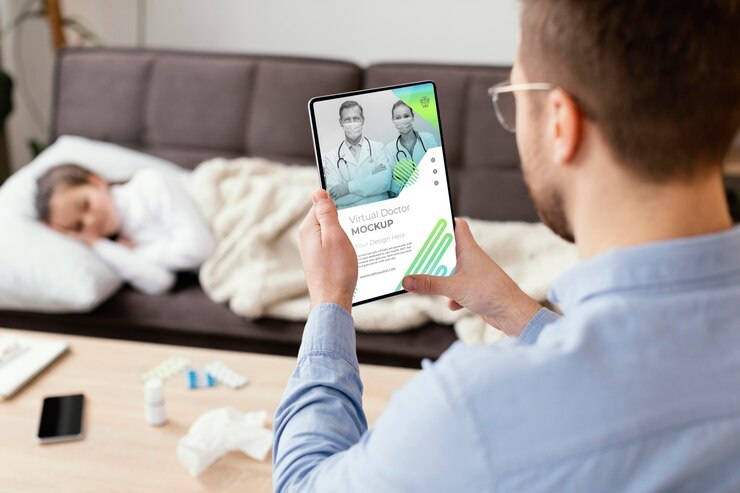7 Advantages of EMR Software for Improved Patient Care
EMR systems have revolutionized the storage, management, and accessibility of patient information, ushering in a multitude of benefits for both healthcare providers and patients. The shift from traditional paper records to digital platforms empowers hospitals and clinics to achieve greater efficiency, accuracy, and collaboration, ultimately resulting in improved patient care.
Here are 7 key benefits EMR software offers to enhance the quality of care delivered:
1. Comprehensive Patient View:
A standout benefit of EMR software lies in its capacity to generate a singular, cohesive record for every patient. Unlike conventional paper charts prone to dispersal across departments or even misplacement, EMR systems establish a centralized hub for all patient information. This encompassing repository encompasses crucial data such as medical history, allergies, medications, immunization records, lab results, imaging reports, and physician notes. Such a comprehensive perspective equips healthcare providers with a holistic grasp of a patient's health status, fostering informed diagnoses, treatment decisions, and proactive care measures.
Consider a scenario where a patient visits a cardiologist due to chest pain. Equipped with access to the patient's entire medical history, including past surgeries, current medications, and known allergies, the cardiologist can provide a more precise diagnosis and recommend the most suitable treatment plan. This eliminates the need for patients to recall and convey their medical background, thereby reducing the likelihood of errors or oversights.
👉👉👉 E-Prescribing Software: Benefits & Impact Across Specialties
2. Enhanced Care Coordination:
EMR systems foster better communication and collaboration between healthcare providers. With secure online access to patient records, physicians from different specialties can collaborate seamlessly, ensuring a more coordinated approach to patient care. This is particularly beneficial for patients with complex medical conditions requiring input from multiple specialists. EMR software can also facilitate communication between hospitals and clinics, avoiding duplicate testing and ensuring a smooth flow of information throughout the patient journey.
For example, an eye hospital utilizing EMR technology can easily transmit a patient's detailed medical history to a collaborating neurologist when needed. This collaborative effort simplifies the diagnostic process and speeds up the administration of suitable treatment.
3. Improved Efficiency and Streamlined Workflow:
EMR software automates many routine tasks, freeing up valuable time for healthcare professionals to focus on patient care. Features like electronic prescribing, automated appointment reminders, and online patient portals reduce administrative burdens. Additionally, EMR systems can streamline workflows by integrating with other hospital management software, such as laboratory software, medical billing software, and dental management software. This centralized platform eliminates data entry duplication and ensures seamless information flow across different departments.
4. Reduced Medical Errors:
EMR software stands as a crucial guardian against medical errors by elevating the precision and clarity of medical records. Gone are the days of grappling with indecipherable handwriting on paper charts; EMR systems usher in a new era of standardized, easily navigable electronic records. This transformative shift minimizes the risk of misinterpretation or oversight of vital information. Moreover, innovative features like computerized physician order entry (CPOE) serve as proactive safeguards, prompting healthcare providers to conduct dosage calculations and allergy checks, bolstering patient safety with every interaction.
5. Improved Patient Engagement:
Numerous EMR systems provide patient portals, enabling patients to securely access their health information online. These portals empower patients to view their medical records, review lab results, request prescription refills, schedule appointments, and communicate directly with their healthcare providers. This heightened level of transparency and accessibility encourages patients to become more actively engaged in managing their health.
6. Data-Driven Decision Making:
EMR software empowers healthcare institutions to gather and scrutinize vast reservoirs of patient data, presenting an invaluable opportunity to unearth unique insights. This data treasure trove facilitates the identification of nuanced trends, the monitoring of intricate disease patterns, and the assessment of treatment effectiveness. Leveraging this wealth of information, hospitals can forge innovative paths in evidence-based decision-making, resource optimization, and the crafting of bespoke healthcare strategies tailored to meet diverse patient needs.
7. Regulatory Compliance:
EMR systems serve as vital allies for healthcare institutions in meeting regulatory requirements imposed by governing bodies. These systems are customizable to ensure adherence to proper documentation, coding, and reporting standards, thereby streamlining administrative processes and mitigating the risk of penalties. This proactive approach not only enhances compliance but also fosters operational efficiency and accountability within healthcare organizations.
Integration with Other Hospital Management Systems:
It's imperative to recognize that EMR software achieves its fullest potential through integration with other hospital management systems. This synergy establishes a unified platform that efficiently oversees every aspect of patient care, from appointment scheduling and billing to inventory management and lab result tracking. Here's how EMR software harmonizes with other systems:
- Laboratory Software: Integration allows for seamless transfer of test orders and results between the EMR and lab system, eliminating manual data entry and minimizing errors.
- Medical Billing Software: EMR software can automatically generate accurate and complete medical bills based on patient encounters and procedures performed.
- Hospital Management System: Integration with a hospital management system provides a centralized platform for managing hospital operations, including patient admissions, discharges, and transfers.
Challenges and Considerations
While EMR software offers a multitude of benefits, it's essential to acknowledge the challenges associated with its implementation and ongoing use. Here are some key considerations:
Cost: Implementing and maintaining EMR software can be expensive. Hospitals and clinics need to factor in the cost of software licenses, hardware upgrades, staff training, and ongoing IT support.
Data Security: Protecting sensitive patient data is paramount. Healthcare institutions need to invest in robust cybersecurity measures to safeguard EMR systems from cyberattacks and data breaches.
Workflow Disruption: Transitioning from paper-based records to EMR can disrupt existing workflows, requiring staff training and adaptation.
Interoperability: Ensuring seamless data exchange between different EMR systems remains a challenge. This can hinder care coordination when patients receive care from multiple providers using different systems.
👉👉👉 EMR Systems: The Key to Reduced Burden & Improved Healthcare Delivery
Although challenges persist, the advantages of EMR software remain indisputable. As healthcare progresses, EMR systems are set to become increasingly pivotal in enhancing patient care quality, refining operational efficiency, and fostering collaborative efforts within the healthcare community. By prioritizing intuitive EMR solutions and reinforcing data security protocols, healthcare organizations can fully tap into the transformative capabilities of this technology to advance patient care standards.
Looking Forward:
The future of EMR software is bright. We can expect advancements in areas such as:
Advanced Analytics: By applying sophisticated algorithms to patient data, EMR systems can provide deeper insights to support clinical decision-making and identify potential health risks.
Telehealth Integration: EMR systems will likely integrate seamlessly with telehealth platforms, allowing for remote patient monitoring and virtual consultations.
Patient Engagement Tools: Patient portals will continue to evolve, offering more interactive features and personalized health education tools to empower patients in managing their health.
👉👉👉 Scalable Hospital Management System-How it helps a Hospital to grow easily




This comment has been removed by the author.
ReplyDelete